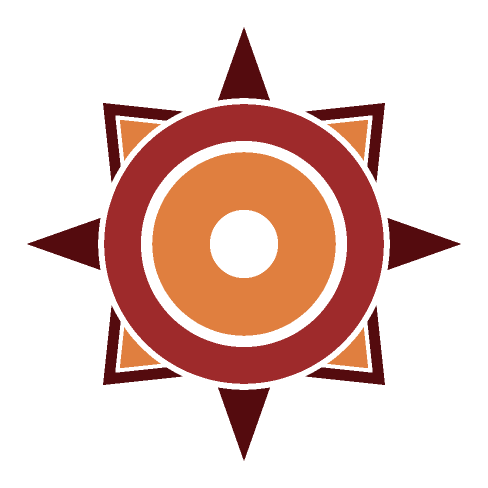Hotworm
Larval stage of the sunbug
Hotworms are the larval form of sunbug beetles. They live in the upper grasslands of Sanoris and spend the Dusk year as larva and the Dawn year as beetles. They survive the cold with the help of solar Glow, which they also use to dig tunnels through snow. They are a favorite winter meal of both gemsteeds and people.
Basic Information
Anatomy
Hotworms are the second stage of metamorphosis of a sunbug. They hatch at only half an inch in length, but can grow to two inches or more by the end of the Dusk year. They have bright orange bodies and a black head. Their skin is covered in very thin, stiff hairs, that glow faintly at the tips.
Despite their tiny size, hotworms are glowfauna. Aligned to Aza, the worms use Glow to protect them against sub-freezing temperatures, aid them in burrowing through ice and snow, and as a self-defense mechanism (albeit ineffective).
As beetles they are oval-shaped with dark red shells and black legs and heads. Male and females look identical.
Growth Rate & Stages
Hotworms are the larval stage of sunbugs. Their larval stage is the longest stage of their development. They complete the larval stage at the end of the Dusk year, where they will pupate and transform into adult beetles. The adults live for a little less than a year and lay the next generation of eggs at the end of their lives.
Baby hotworms hatch after the first heavy snowfall of the Dusk year. They race to the surface just before the suns set to charge up their Glow reserves. They look like red, glowing grains of rice scattered just below the surface of the snow.
When night falls, the hotworms burrow into the snow to hide from predators. They riddle the snow with tiny tunnels that they melt with their Glow. Hotworms do not need to actively drink water because they absorb the melted snow through their skin as they burrow. When the suns rise again, they hide in the soil to avoid being revealed as the snow melts.
Hotworms repeat this nightly cycle for the entirety of the Dusk year. As they grow, they become more and more visible each time they surface to recharge, leaving them vulnerable to hungry gemsteeds. Luckily, hotworm eggs are laid in such sheer numbers that a healthy population still remains even after the gemsteeds have had their fill.
Just before the snow melts in the new Dawn year, hotworms burrow into the soil again to pupate. They emerge from their pupae when the snow melts away as fully grown sunbugs. Curiously, sunbugs do not use any Glow abilities as adults.



'They are best eaten whole, as crunching down on their bodies releases a thrilling blast of hot Glow into the mouth!' My entire body recoiled at this. I love them though. :D I like the image of tiny red grains of rice under the snow.
;D oh what, you don't like the idea of eating a live, warm, caterpillar creature? hahaha thank you so much for your kind words <3